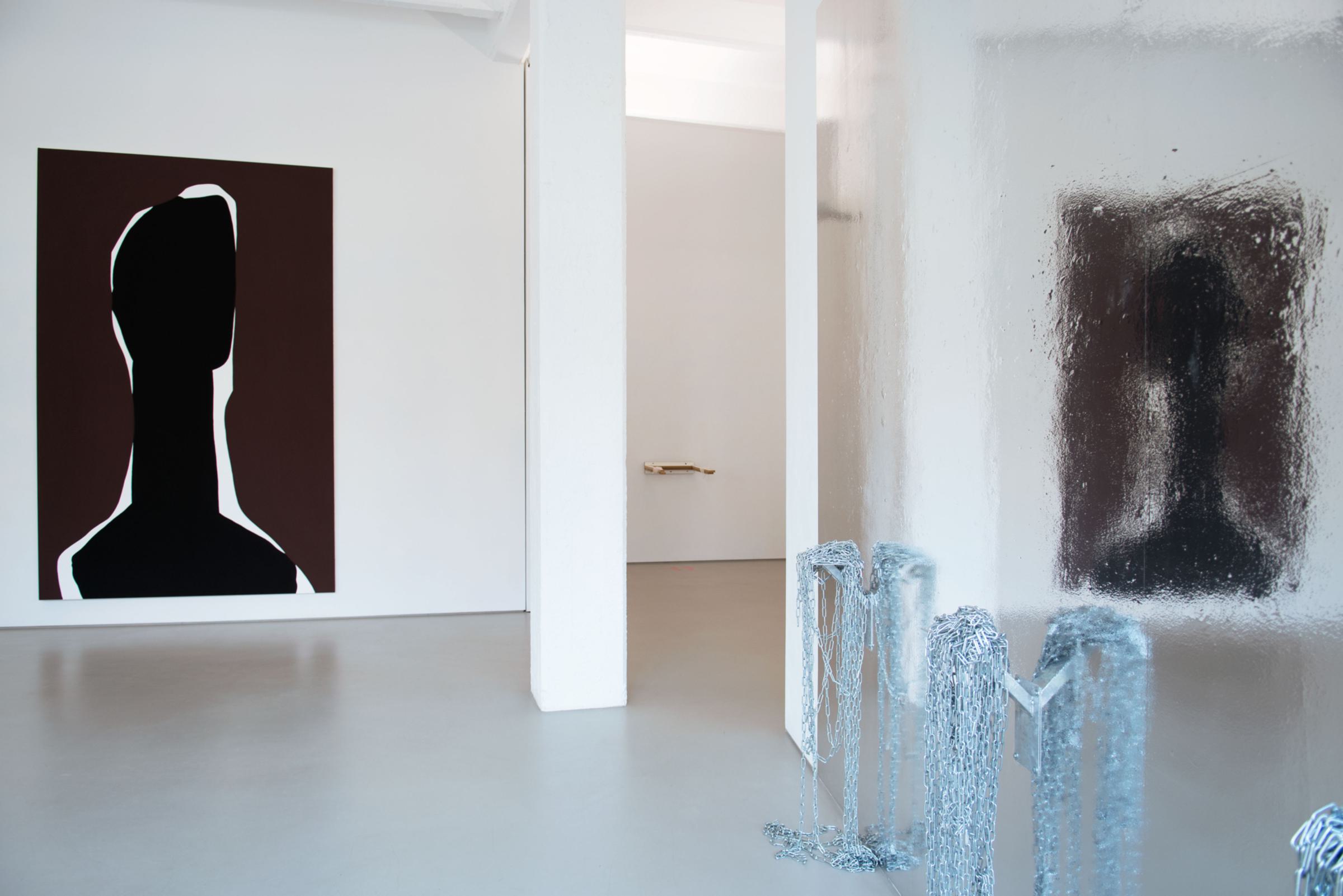Contemporary Male Art: Reto Boller & Markus Weggenmann in Dialogue, Invar-Torre Hollaus.
What is the purpose of a “flat monument” hung on the wall, on which an elongated, bust-like, amorphous shape in black paint contrasts schematically with its background? And what should we make of the directions “Once a day” in regard to a crudely made, seemingly uncomfortable holder attached to the wall and footprint markings in red adhesive film on the floor? And what is supposed to be typically “male” about this art, which lacks the virile gestures associated with Jackson Pollock or Jeff Koons? Or does the sober yet provocative exhibition title simply point to the fact that it is an exhibition by two male artists? The two Swiss artists Reto Boller (1966, Zürich) and Markus Weggenmann (1953, Singen/Hohentwiel) clearly take a position. Their works use very different means and materials to create a strong spatial, physical, sometimes unwieldy presence, and thus challenge the viewer far beyond a purely aesthetic level of perception. At first glance, this juxtaposition might seem surprising, since both artists have been consistently pursuing independent developments in their work for years, in which they seek new artistic means of expression in a direct engagement with art history as well as with their everyday environment. Both share a strong interest in painting and a decisive use of often bold colors. While Weggenmann at least formally works within traditional panel painting, Boller uses a wide range of industrially manufactured materials and objects from other contexts as well as painterly interventions. Both artists reconsider the traditional medium of painting by using bold distemper or acrylic paints or colored adhesive films as well as in some cases industrially manufactured substrates, which brings these works into an immediate, contemporary context. Reto Boller’s and Markus Weggenmann’s works show themselves to be abstracted, artificial objects of an associatively metaphorical, symbolic imagery; figurative aspects always remain a central factor in the work of both artists. Physical, organic aspects can be found both in Markus Weggenmann’s new paintings—which at times recall a human figure (lw70, lw75) or a skull (lw52)—as well as in Reto Boller’s sculptural objects and installations, some of which fill an entire wall or room with colored, reflective adhesive film that diffusely reflects the space and the viewer (B-18.1 Amsterdam (bereitgestellt); O-17.1 (Machine Head); B-18.2 (Landschaft). In contrast to earlier years, instead of aluminum panels and flatly applied glossy paints, Markus Weggenmann now uses cotton and boldly colored distempers, which penetrate deeply into the fabric, making the colors no longer glossy, but warmer and more haptic. For the first time, Galerie Onrust is presenting a joint exhibition with Reto Boller and Markus Weggenmann, both of whom have exhibited in Amsterdam several times before: Boller most recently in 2010 (at Vous Etes Ici) and Weggenmann in 2013 (at Galerie Onrust). With recent works, both artists offer insight into their current oeuvre and their understanding of art.
